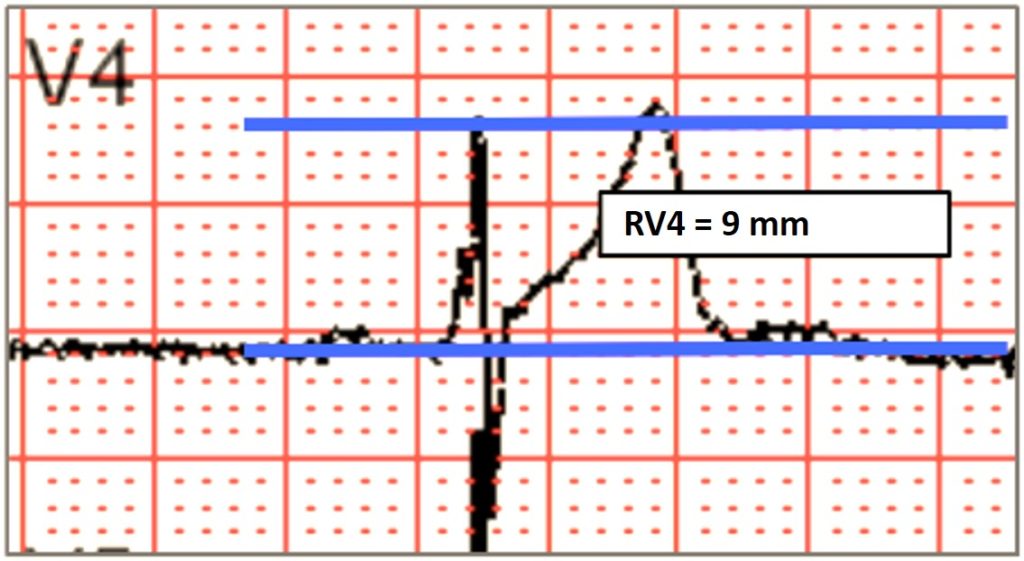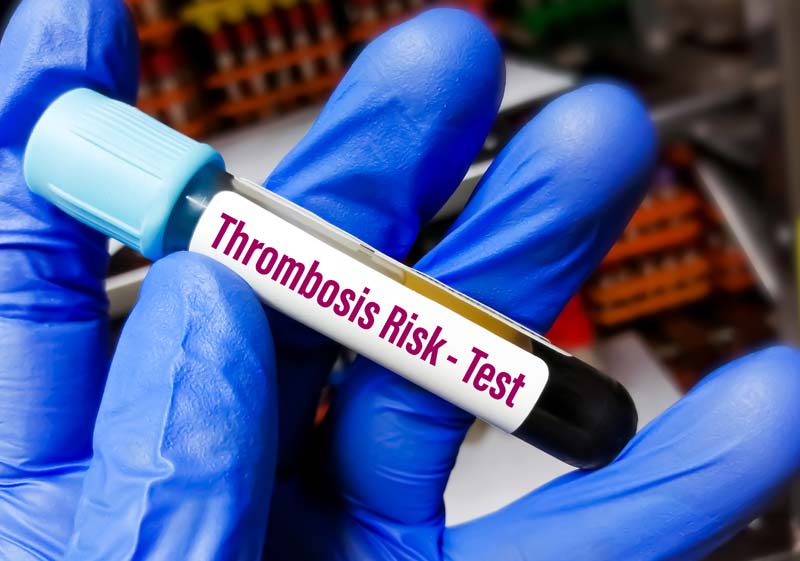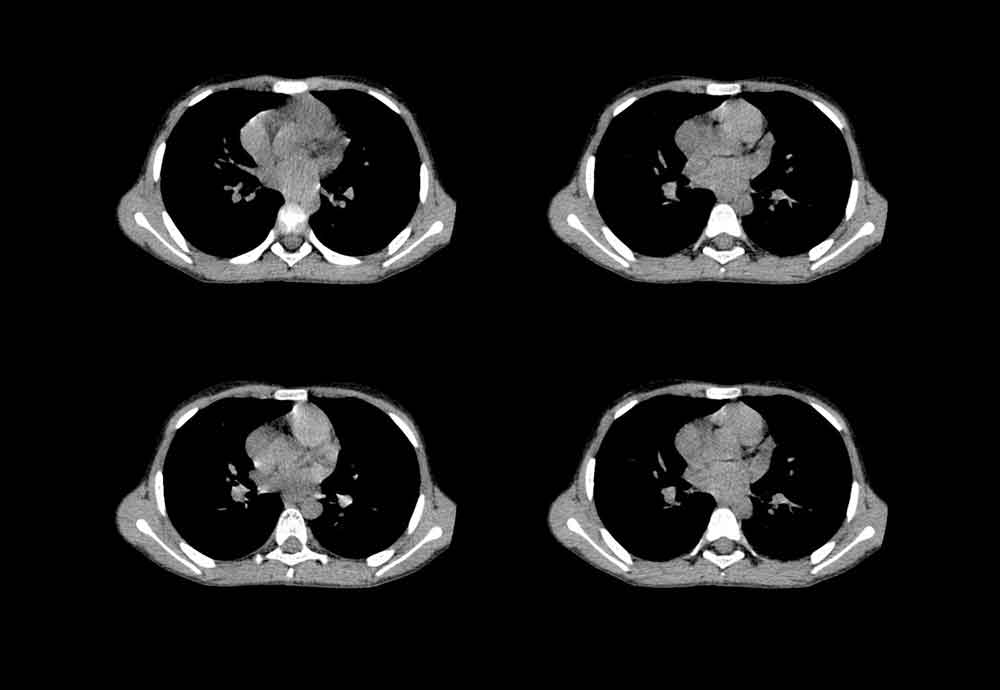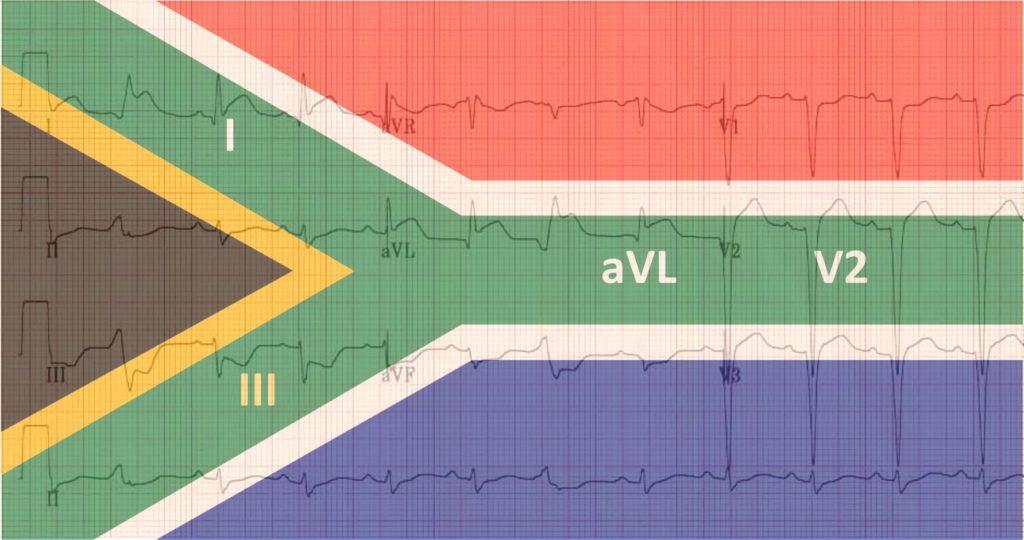Stephen Smith’s formula for Subtle Anterior STEMI online Calculator

Differentiates normal variant ST elevation (benign early repolarization) from anterior STEMI, more sensitive than 3-variable version. Dr. Steven Smith has about 90% sensitivity and specificity.
Stephen Smith’s formula for Subtle Anterior STEMI use in chest pain patients presenting with an ECG that is non-diagnostic but suspicious for anterior MI.
NB! Before using this calculator, make sure the EKG shows ≥1 mm ST elevation (STE) in ≥1 of the precordial leads V2-V4.
If it shows any one of the following, then it is NOT normal variant, and is very likely to be LAD occlusion; such cases were excluded from the study as “obvious” MI:
- >5 mm STE.
- Non-concave STE.
- Inferior reciprocal changes ST in II, III, aVF, V6.
- Anterior ST depression.
- Terminal QRS distortion in V2 or V3:
- Q waves in any of V2 to V4.
- Any T wave inversion from V2 to V6.
[Please, enter if you want to get the value according to Stephen Smith’s 4-Variable formula for receiving the highest sensitivity and specificity of the calculated values]:
| Score | Stephen Smith’s formula | Range of values | Conclusion |
|---|---|---|---|
| 0 | 0 | 0 | 0 |
| Score | Stephen Smith’s formula | Range of values | Conclusion |
|---|---|---|---|
| 0 | 0 | 0 | 0 |
Both benign early repolarization and STEMI cause ST elevation. The challenge is to differentiate the two entities.
Some patients present with subtle ECG changes nondiagnostic for STEMI but still have 100% coronary artery occlusion and benefit from acute percutaneous coronary intervention (PCI).
Using the equation in such cases can lead to timely cath lab activation, or more intensive evaluation.
Stephen Smith’s formula for the diagnosis of “Insidious” anterior ST-segment elevation acute myocardial infarction (4 variables) includes:
- Interval QTc with Bazett correction, msec
- Amplitude of QRS in lead V2, mm
- Amplitude of the R wave in lead V4, mm
- ST segment elevation 60 ms after the J-point in lead V3 mm
Formula:
| 3-variable formula for subtle anterior STEMI = 3-variable = (1.196 x STE 60 elevation in V3, mm) + (0.059 x Bazett QTc interval, ms) – (0.326 x R amplitude in lead V4, mm) |
| 4-variable formula for subtle anterior STEMI = 4-variable = (0.052 x Bazett QTc interval, ms) – (0.151 x QRS amplitude in lead V2, mm) – (0.268 x R amplitude in lead V4, mm) + (1.062 x STE 60 elevation in V3, mm) |
- STE – ST-elevation 60 ms after the J-point in lead V3, in mm;
- QTc – QT interval corrected relative to heart rate, in ms (according to automatic ECG analysis);
- RV4 – the amplitude of the R wave in lead V4, in mm;
Interpretation of 3-component formula results:
- Indicators ≥23.4, probably there is PNA occlusion.
- Indicators 22-23.4 – the value does not reach the diagnostic threshold of 23.4, but there is a possibility that the patient has PNA occlusion.
- Indicators <23.4, low probability of PNA occlusion, possible benign early ventricular repolarization.
Interpreting the results of the 4-component formula:
- Scores ≥18.2 are likely to be for anterior STEMI (sensitivity 83.3%, specificity 87.7%, and diagnostic accuracy 85.9%).
- Scores <18.2 are likely to indicate early benign repolarization.
Smith’s 4-variable formula is more sensitive than the 3-variable version of the formula.
NB! The authors specifically excluded patients with obvious MI. Using the calculator in cases that were excluded in the study may lead to a wrong result.
Tips for ECG interpretation:
1). Measure STE at 60 ms in lead V3:
ST elevation at 60 ms after the J-point in lead V3, relative to the PR segment.
- Measure STE 60 ms (1½ small box after J point).
- The baseline is the PR segment.
- In this example, STE 60 = 4 mm.
2). Measure amplitude of R wave in V4:
In this example, RV4 = 9 mm.
3). Calculate the QTc: QTc is simply read from the computerized interpretation (uses Bazett’s formula).
Conclusion
Activation of a cath lab team is appropriate in patients with a positive Smith formula in the appropriate clinical context. At the very least, this result should prompt the command of the heart team to carry out repeated ECG recordings, the so-called serial ECG, and echocardiography.
The Smith Formula is best used to identify patients with LAD occlusion, which was initially considered a normal option for early repolarization.
If the Smith formula (4-variable) is negative for STEMI, proceed with caution if STEMI is still suspected.
References:
- Smith SW, Khalil A, Henry TD, et al. Electrocardiographic differentiation of early repolarization from subtle anterior ST-segment elevation myocardial infarction. Ann Emerg Med. 2012;60(1):45-56.e2. https://pubmed.ncbi.nlm.nih.gov/22520989/
- Driver BE, Khalil A, Henry T, Kazmi F, Adil A, Smith SW. A new 4-variable formula to differentiate normal variant ST segment elevation in V2-V4 (early repolarization) from subtle left anterior descending coronary occlusion – Adding QRS amplitude of V2 improves the model. J Electrocardiol. 2017;50(5):561-569. https://www.sciencedirect.com/science/article/abs/pii/S0022073617301073
- Bozbeyoğlu E, Aslanger E, Yıldırımtürk Ö, et al. A tale of two formulas: Differentiation of subtle anterior MI from benign ST segment elevation. Ann Noninvasive Electrocardiol. 2018;:e12568. https://onlinelibrary.wiley.com/doi/epdf/10.1111/anec.12568
Register on our website right now to have access to more learning materials!
Unconsciousness and ECG changes in a patient with comorbidities
Tisdale Risk Score for QT Prolongation
Baseline Cardiovascular Risk Assessment in Cancer Patients Scheduled to Receive Cardiotoxic Cancer Therapies (Anthracycline Chemotherapy) – Online Calculator
Baseline cardiovascular risk assessment in cancer patients scheduled to receive cardiotoxic cancer therapies (Anthracycline Chemotherapy)…
SAVED VTE Score
SAVED score for venous thromboembolism risk stratification in patients with multiple myeloma receiving immunomodulators. [ezfc…
IMPEDE VTE Score
IMPEDE score for venous thromboembolism risk stratification in patients with multiple myeloma receiving immunomodulators. [ezfc…
Chest CT Scan
To analyze a CT scan of the chest, imagine that the patient is lying on…
X-ray Heart Borders
According to the radiograph of the chest, the boundaries of the heart are formed: The…
Emergency care of a patient with chest pain – Acute Coronary Syndrome with ST-segment elevation and equivalents /OSCE guide
Opening the consultationWash your hands and don PPE if appropriateIntroduce yourself to the patient including…













